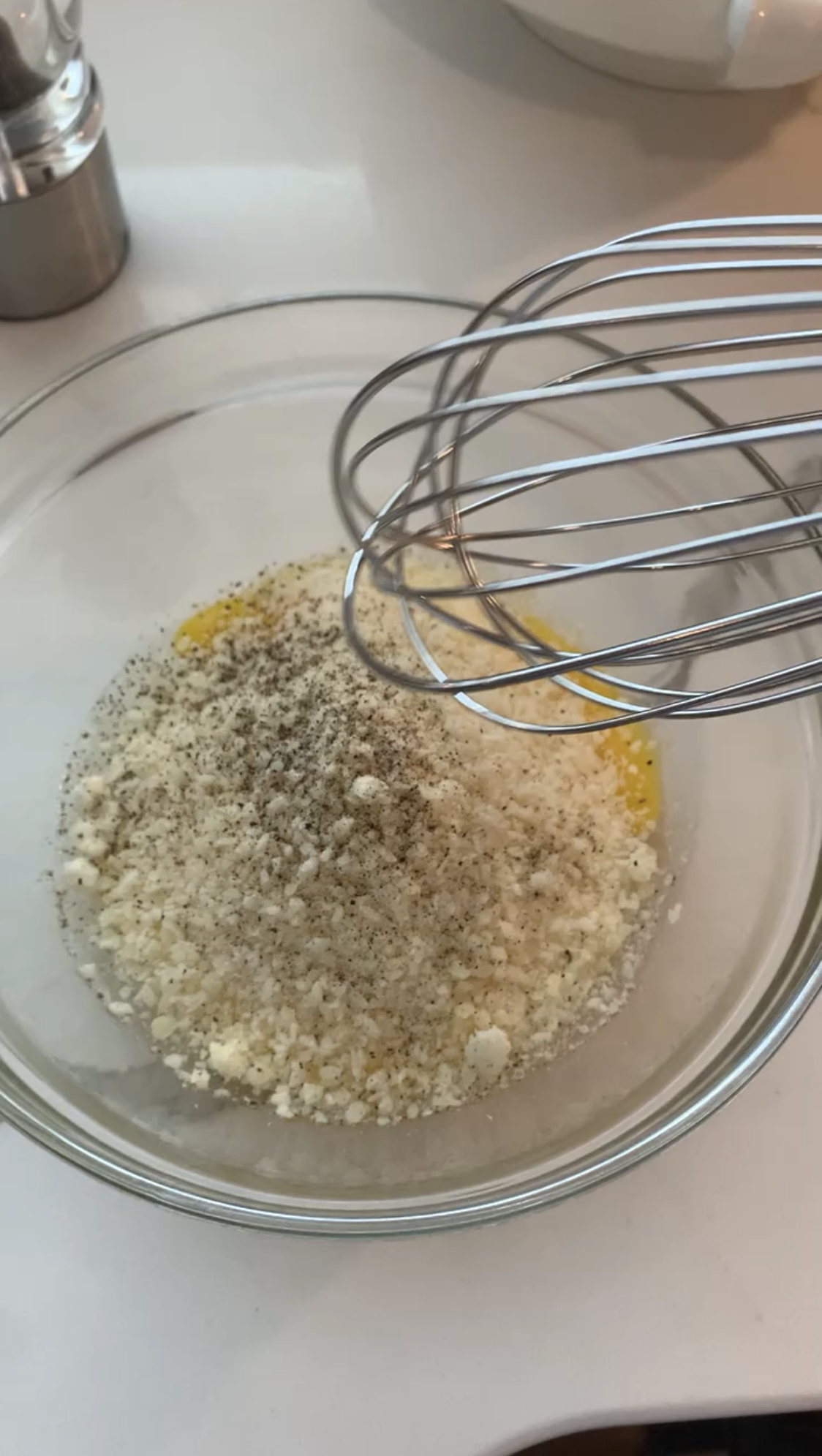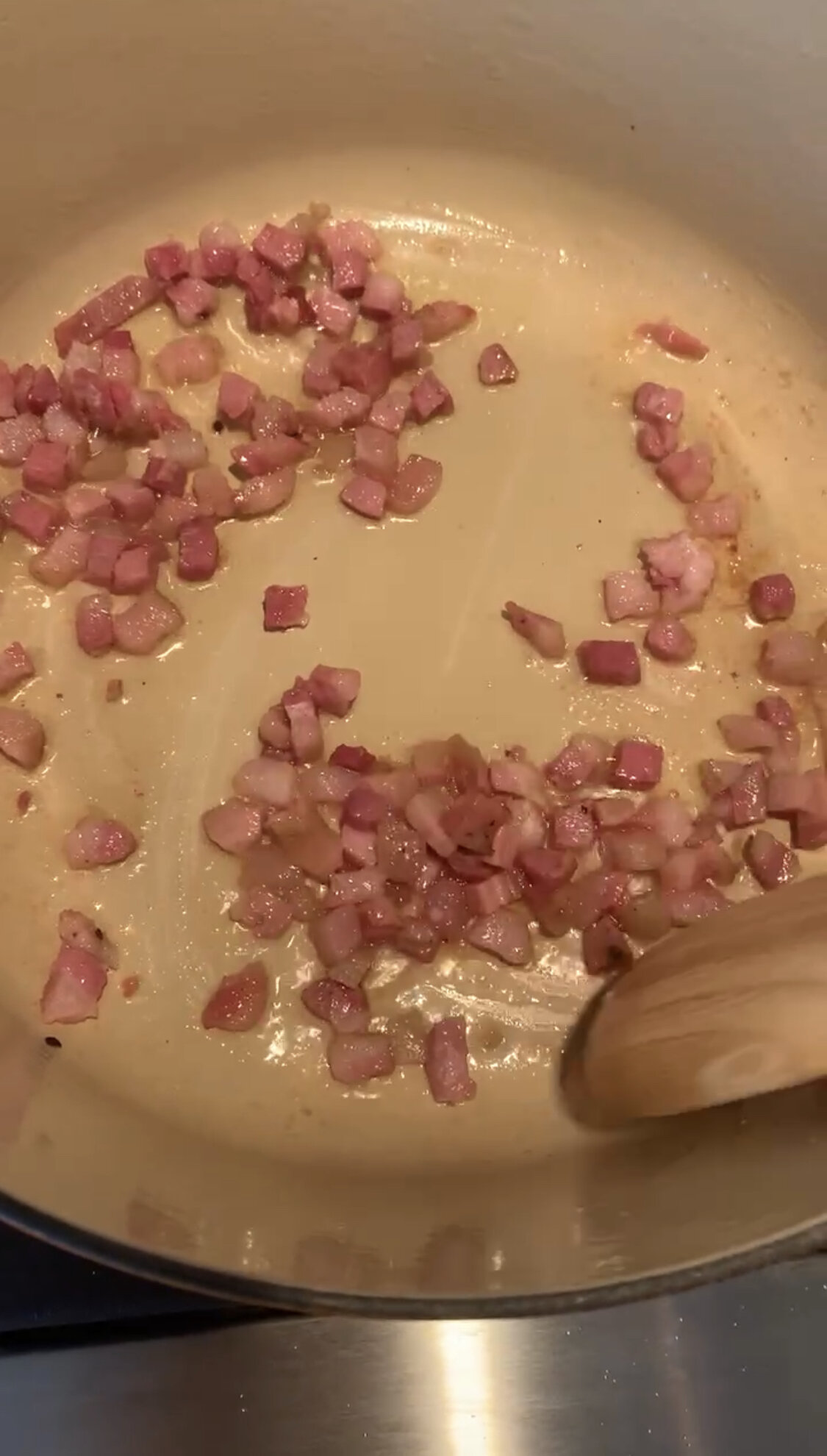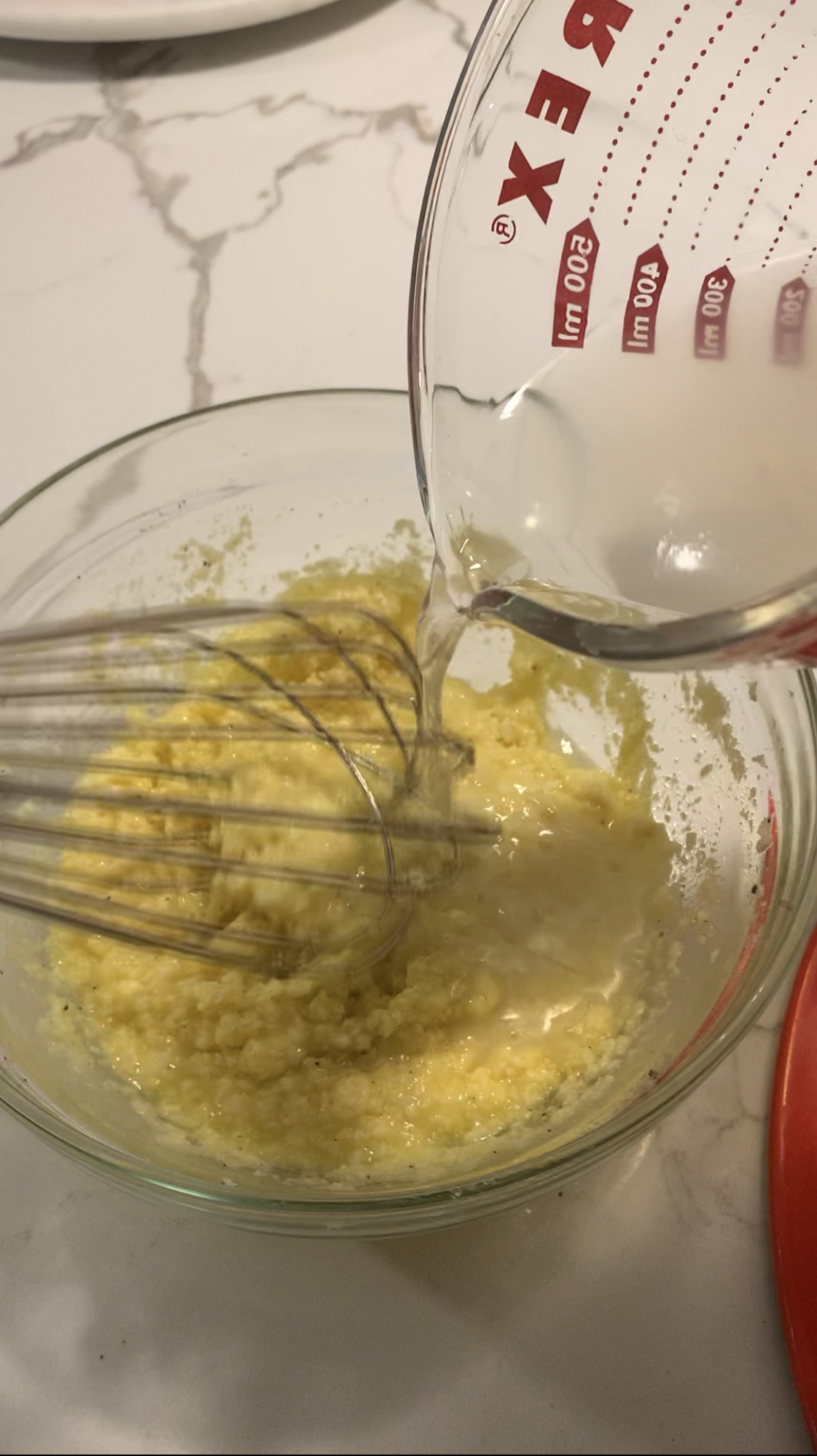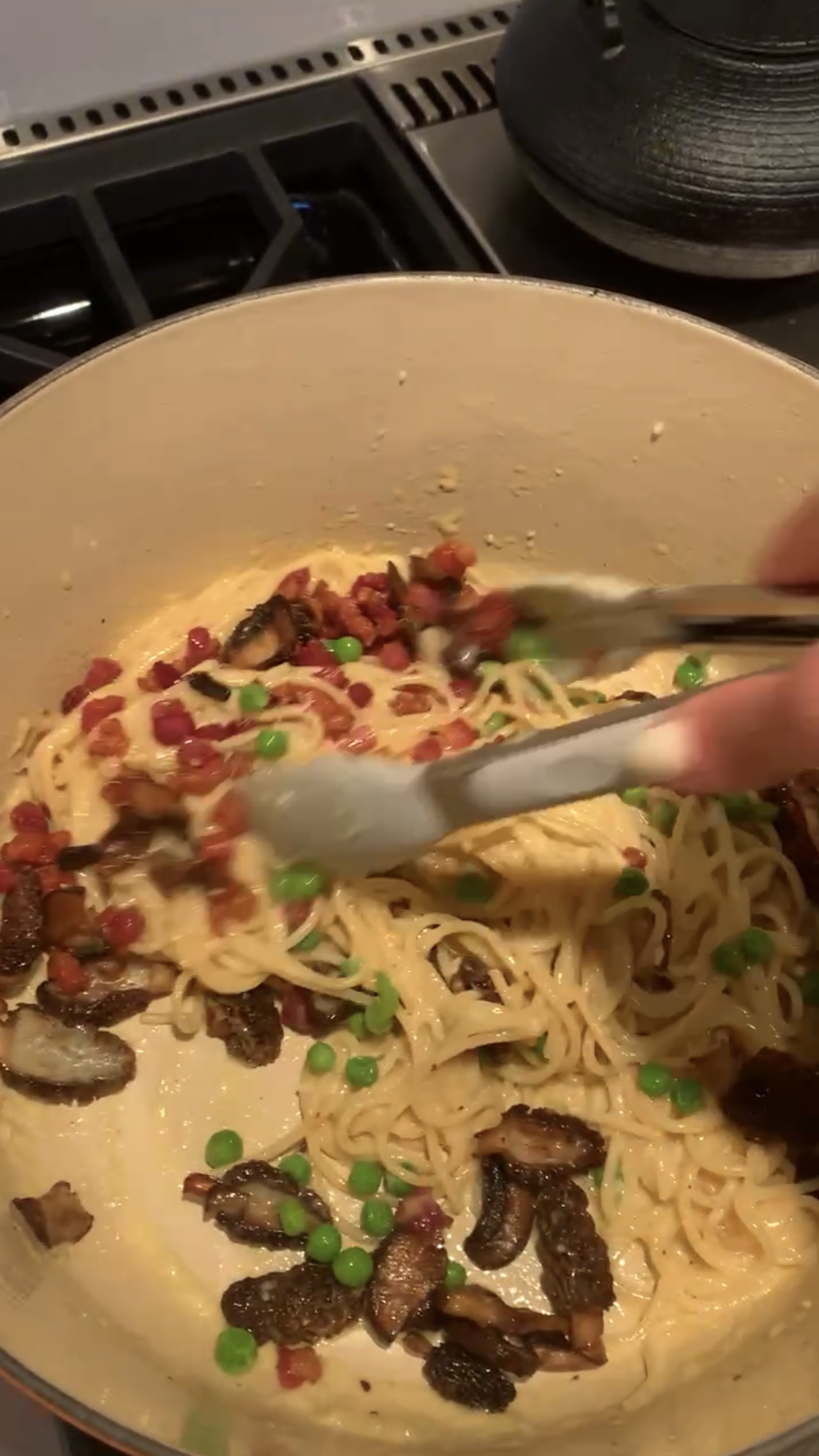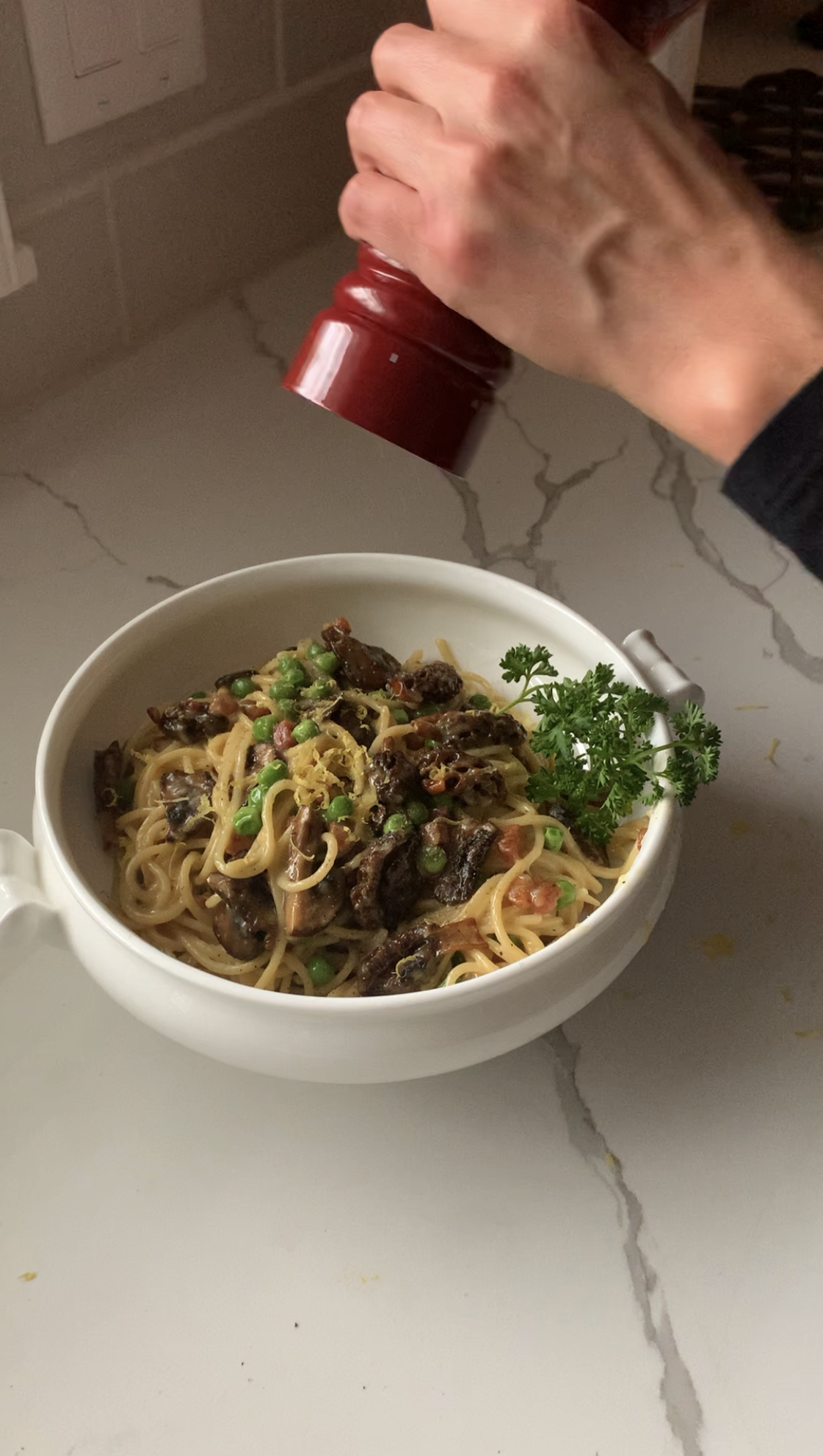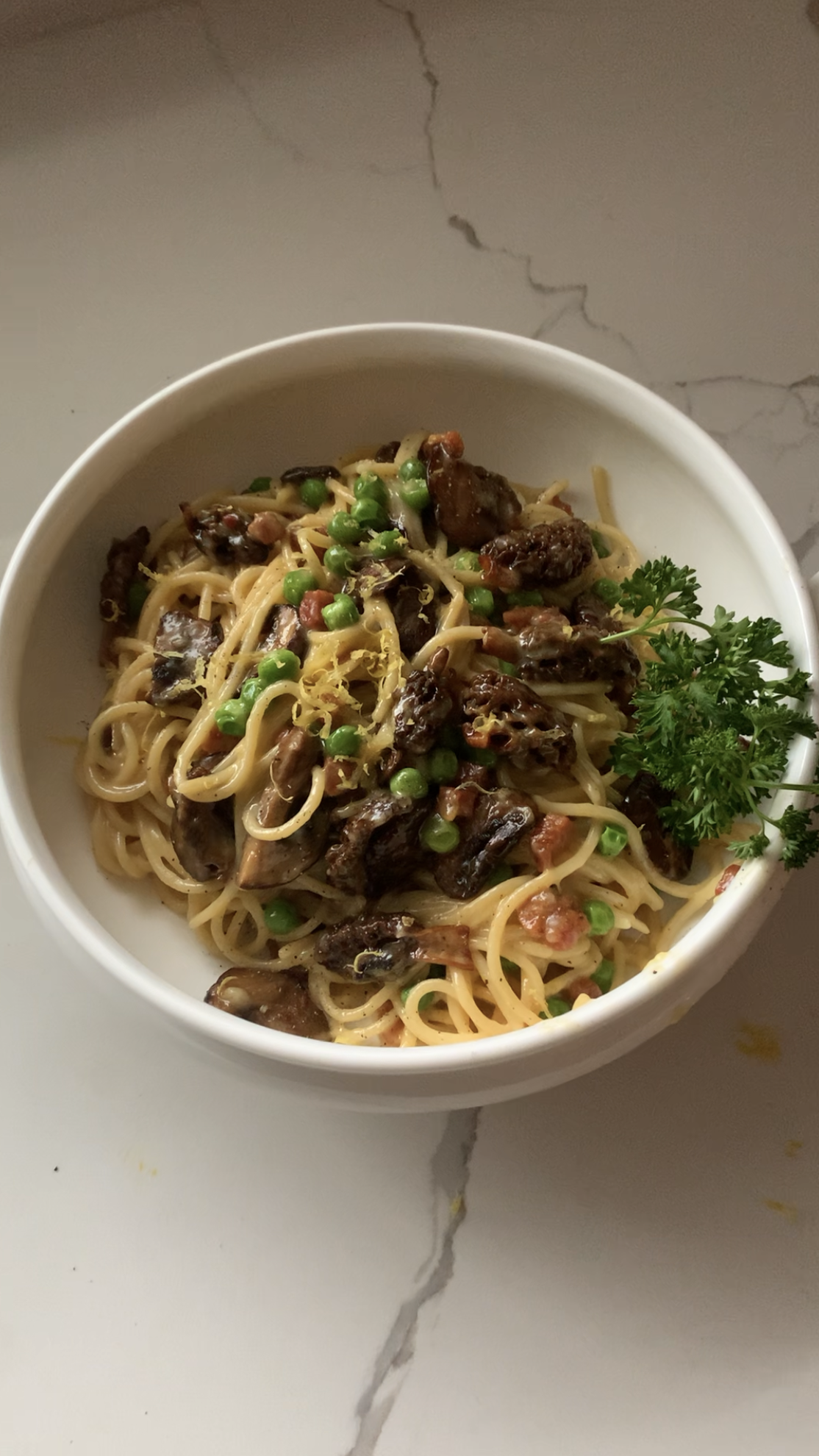Springtime Spaghetti Carbonara with Foraged Morel Mushrooms
Basically springtime goodness in a bowl, this woodsy take on traditional Carbonara is a great way to highlight your freshly-harvested haul of morel mushrooms.
I’m going to go ahead and say it: this is one of the best dishes I’ve ever come up with! Loosely named “Spaghetti Carbonara…Primavera,” this Italy-meets-Northwoods pasta is everything you can ask for in a decadent dinner.
The salty pancetta, earthy morels, and creamy sauce of egg and cheese combine for a richly satisfying flavor, while a sprinkle of peas and lemon zest brighten things up with a pop of freshness. As a bonus, it’s the perfect way to help your morels “go” a bit further while still letting them shine.
The directions may appear a little daunting at first glance, but each step is actually quite simple. I hope you’ll give this a go whether you’ve foraged some morels of your own, found them at a store, or simply want to cook a yummy pasta with a different fungi of your choosing.
What’s Carbonara?
Carbonara is a style of pasta that originated in or around Rome. Traditional Carbonara is super simple on the ingredient front, containing noodles, egg, a hard cheese, cured pork and black pepper. A common misconception is that Carbonara is made with a cream-based sauce. In fact, it’s a crafty combination of egg, cheese and pasta water that gives Carbonara its signature, delicate creaminess.
Some believe Carbonara, which stems from the word for “charcoal” in Italian, got its name from the way the black pepper looks like specs of coal in the dish. However, another theory on the name is simply that it was first served in a Rome-based restaurant called “La Carbonara.” Whatever the reason for the title, I can promise you, it’s truly one of the more satisfying meals out there!
What are Morel Mushrooms?
If you follow me on Instagram or YouTube, you’ve been hearing about morels a lot lately (too much?!). They’re a species of mushroom that start popping up in Spring here in the Great Lakes region. They’re highly sought after for their unique earthy flavor and are considered a delicacy by many. Because they can’t be cultivated and their growing season is so short (often just 2-3 weeks a year in a given area!), they typically create quite the buzz this time of year. Read more about Morels and how I foraged for these HERE.
Don’t have morels? This recipe is still great if you substitute in another variety of mushrooms. You’ll see from the photos, I actually bolstered up the portion of fungi with some cremini mushrooms because I didn’t have quite enough morels.
Precautions:
The first rule of foraging: if you’re not positive, don’t eat it! While I truly hope you’re able to cook up this recipe using some self-harvested morels, proper identification is vital since many species of mushrooms can be toxic. See my morel foraging blog post for basic identification, but research thoroughly before eating what you find. Thankfully, morels are one of the easiest mushrooms to identify. Another thing to note with morels: they must be cooked before eating!
Ingredients:
(Serves 2-3)
1/2 lb. Morel Mushrooms, halved and cleaned (I filled in with some Cremini mushrooms)
1/4 cup Cooked Peas
4 oz. Pancetta, sliced into small cubes (substitute bacon if needed)
2 Egg Yolks
1 Egg
2/3 cup Parmesan Cheese
1/2 lb. Dry Spaghetti Noodles
2 tbsp. Olive Oil
Zest of Half a Lemon
Salt and Freshly Ground Black Pepper
Directions:
Step 1: Prepare Your Morels: If you’ve just harvested your morels, you’ll likely notice they’re pretty darn dirty. Not to fear! Cleaning them is simple. First, fill a bowl with cold, salted water. Slice your mushrooms lengthwise into halves. Next, drop them into the water and swish them thoroughly for several minutes until any dirt or critters are removed. Lay morels to dry completely on a rack or paper towel.
Note: after harvesting, you can keep your morels fresh for 2-3 days in the fridge by wrapping them loosely in paper towel or placing them in a paper bag. You can also dry or freeze your morels, and many tutorials for both options can be found with a quick Internet search. If eating fresh, wait to wash them until just before eating.
Step 2: Prepare Your Peas: This recipe calls for cooked peas. I recommend buying them frozen and following package directions for cooking.
Step 3: Prepare Egg and Cheese Mixture: In a small bowl, whisk together egg, egg yolks, parmesan cheese and a few grinds of black pepper.
Step 4: Heat water for the Pasta: In a large pot, heat 4-6 quarts of water. Once steaming, lightly salt the water.
Step 5: Cook the Pancetta: While waiting for your water to boil, heat 1 tbsp Olive Oil in a separate, large Dutch oven or heavy pot over medium. Add pancetta and cook until just crisp, stirring occasionally. With a slotted spoon, remove pancetta from pot and set aside, leaving residual fat and oil.
Step 6: Cook the Mushrooms: At this point, the Dutch oven should still be hot, and should be nicely coated with about 2 tbsp combined of olive oil and fat from the pancetta. Depending on how much fat cooked off from the meat, you may need to remove a bit with a spoon or add in a bit more olive oil. Add mushrooms and cook over medium heat for 10-12 minutes or until lightly browned and tender. Jostle the mushrooms once or twice as they cook, but leave them mostly untouched. Once cooked, remove mushrooms from Dutch oven using a slotted spoon, and set aside with the pancetta.
Step 7: Begin cooking Spaghetti Noodles: While the mushrooms are cooking in your Dutch oven, add spaghetti to boiling water and cook, stirring occasionally, until 2 minutes less than package directions. Carefully remove 1 cup of pasta water with a glass or metal measuring cup and set aside. Strain spaghetti in a colander – it should be just slightly undercooked.
Step 8: Finish cooking the Noodles: Quickly wipe Dutch oven with a paper towel, removing some but not all of the remaining oil and fat. Pour in 1/2 cup of pasta water and, once hot, add the spaghetti. Cook pasta for about a minute or until al-dente, stirring continually. Remove from heat.
Step 9: Combine and Finish: Add remaining pasta water into egg and cheese mixture and whisk thoroughly. Add mushrooms, pancetta and cooked peas into the Dutch oven. Then, slowly pour in the egg and cheese mixture, mixing constantly until the sauce forms a smooth, creamy coating. Taste, and add a pinch of salt if needed. Top with freshly-ground black pepper and lemon zest, and serve hot!
Let me know what you think in the Comments section below! Tried it and liked it? Share on Instagram tagging @nattieupnorth.




